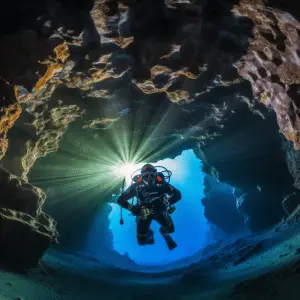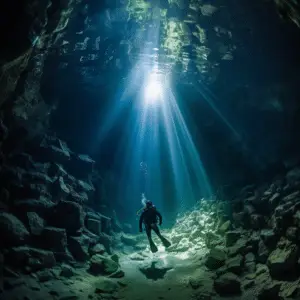A common mistake that people make is believing that a cave and a cavern are synonymous with one another. When in fact they are completely different things. If you are someone that doesn’t specialize in that area of knowledge, it is completely understandable that you don’t know the difference. The differences between the two are few and far apart and so it can be difficult trying to work it out alone, but worry not. Here are the definitions of what a cave and a cavern are and what differentiates the two.
Cave

We all know what a cave is, or do we? When we look at the cave’s oxford dictionary definition, it is defined as a cavity in the rock. Of course, a cave is a lot more than that, but caves are usually noted to be openings in mountains. Usually, caves are naturally occurring, but they can also be created as a product of human labor. The main defining feature of a cave is that its opening is above the ground. Another important aspect to look at when defining a cave is that a large portion of it needs to be hidden from direct sunlight. Because of this factor, when people choose to do scuba activities in caves one feature on the rescue diver list of equipment is a torch of some sort to be able to see into spots that don’t fall under direct sunlight.
Cavern
A cavern really isn’t that different from a cave. In fact, caverns actually fall under the category of caves. However, a cavern is very large and has an opening that is not above the ground. Instead, the opening is on the ground, and to access the cavern you have to take a corridor underground. Caverns always appear naturally and are formed over a large period of time through natural erosion and carving by water.
The differences between a Cave and a Cavern
The differences between a cave and a cavern aren’t easily definable due to how acute they are. Aside from how you enter each, they share a lot of similarities, however, in the world of diving, they are considered to be vastly different. Cave diving is usually avoided by anyone who doesn’t have years of experience in diving and is considered extremely dangerous. Though there are age restrictions for scuba diving in caverns, the experience is still offered by many diving companies and is actually a very common activity. So, though there may be few differences between what a cave and a cavern really are, what are the differences between diving in the two?
Cave diving
As mentioned, caves are characterized by their little direct sunlight. Few apertures and light sources cause this. This wouldn’t matter in a typical cave. In an underwater cave, this could cause issues. Divers try to have direct access to the water’s surface for safety. In an underwater cave, you can only ascend so far. Thus, if a random issue arises in the cave, you cannot rapidly return to the surface. Instead, you must make your way back to the entrance, which could be difficult if your oxygen is low and you are deep in the cave.
Due to the dangers that come with it, not a lot of diving organizations offer cave diving experiences and if you choose to do it of your own accord, you need to follow some safety rules.
Diving safely in caves
First, cave diving should be done with a friend or team. Caves are easy to get lost in, so be sure you know the cave before diving. To avoid getting lost in an underwater cave, bring underwater lighting. Choosing a few illumination options lets you leave them in the cave. You need multiple lights to see your surroundings, thus one won’t do. It will also help you familiarize yourself with the cave and improve your navigation skills on future diving adventures.
The most important rule is to not get carried away. Underwater caves can be extremely exciting as they are full of interesting reminders of history. However, you need to ensure that you don’t travel too far into the cave and that you have enough oxygen to cover what time you do spend in the cave.
Cavern diving

Though cavern diving does have its risks, these risks are far fewer than the risks that you can find with normal cave diving. When divers do delve into caverns, they make sure they stay in the bits within direct sunlight. This means that they have direct access to exit points. Caverns have bigger openings than caves, so accessing these exit points is much easier.
Most companies that do offer diving experiences within caverns also run very tight ships and will not allow any divers with little experience to venture further than a few meters from exit points, to ensure their own safety. When diving in caverns, people are also instructed to wear plenty of protective layers as within caverns they are much more exposed to the possibility of being scratched or cut than what they are in normal bodies of water.
